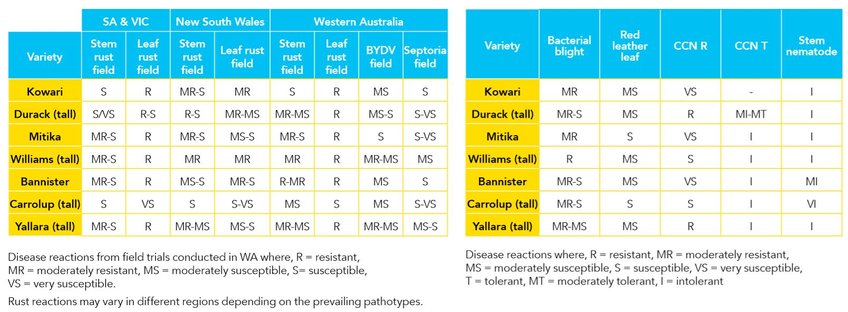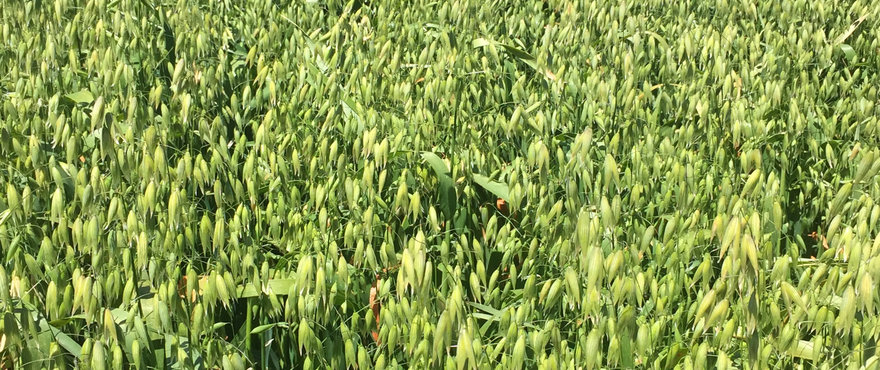Download a copy of the Kowari Oat factsheet.
Kowari is another highly promising oat variety from the National Oat Breeding Program.
Kowari sets a new benchmark for ß-glucan combined with low screenings in the Australian Milling oat industry.
It is dwarf in stature slightly taller than Mitika with excellent grain quality and will suit most traditional oat growing areas of Australia. It was derived from a cross between Mitika and a WA breeder’s line.
Key Features
• Improved ß-glucan content - 5.2% (dm basis) compared to 4.4% for Mitika
• Excellent grain quality
• Lowest screenings percent of all major varieties
• Good 1000 grain weight
• High protein and groat percentage
• Mid maturity similar to Mitika
• Competitive grain yield
Kowari can deliver growers a competitive yielding oat variety with excellent grain quality highly desired by marketers. The lowest screenings of any variety in the market means growers get more saleable grain from every paddock.
Kowari has gone through milling evaluation trials in Western Australia and New South Wales. It has been approved for Milling 1 grade in WA and has also been approved for milling by Uncle Tobys in NSW.
Sowing Rate
60-70 kg per hectare.
Timing
Early to mid May.
Performance


Disease & Pest Resistance

EPR
An EPR of $2.50/t +gst is payable on all production excluding farm saved seed. Approved for milling by Uncle Tobys.
Plant Breeders Rights (PBR): This variety is registered under Plant Breeders Rights (PBR) in Australia. Unauthorised commercial propagation or any sale, conditioning, export, import or stocking of propagating material is an infringement under the Plant Breeders Rights Act (1994). Any breach of this legislation will leave the grower liable for prosecution.
Disclaimer: The information presented in this brochure is from official and other sources and is considered to be reliable. It is provided in good faith and every care has been taken to ensure its accuracy. Barenbrug does not accept any responsibility for the consequences that may arise from the acceptance of recommendations or the suggestions made.
Disease Resistance/Tolerance:
Haymaker has demonstrated resistance to Chocolate Spot (Botrytis), Rust (Uromyces) and Ascochyta (Ascochyta spp.). Haymaker Woolly Pod Vetch adds to the rotation by providing an excellent alternative crop for controlling cereal root diseases.
Variety Management/Agronomy:
Regeneration
Haymaker Vetch produces 80-90% hard seed. This is advantageous for crop/pasture rotations that require long term persistence.
Grazing
Vetch is not suited to close grazing as their growing points are well above ground level. However, in longer season environments Haymaker can be lightly grazed successfully during winter and early spring provided that the growing points are not damaged. Heavy grazing can cause significant damage to the plant and it may not recover. Bloat can be a problem on pure legume stands and stock will have to be watched if grazing green Vetch paddocks.


